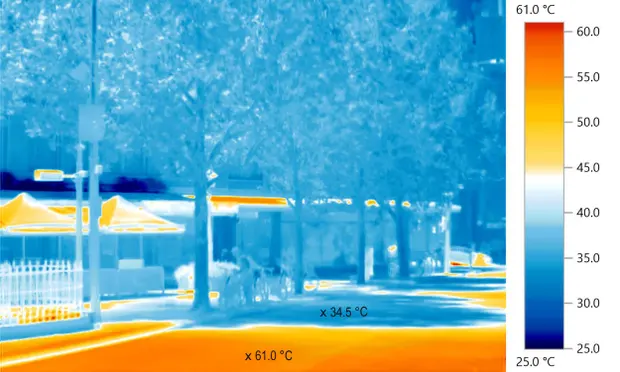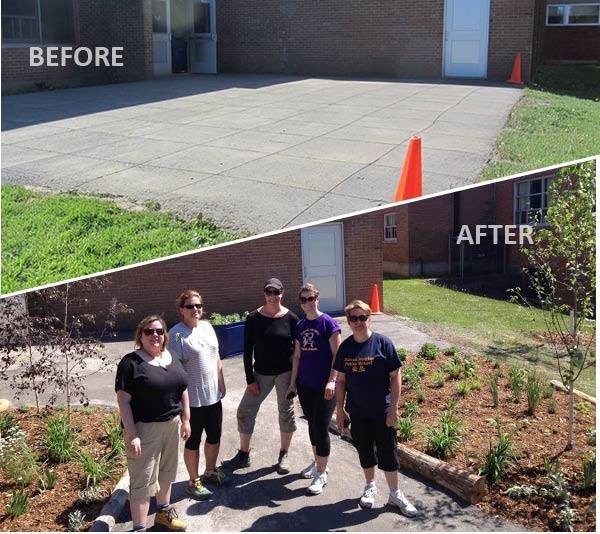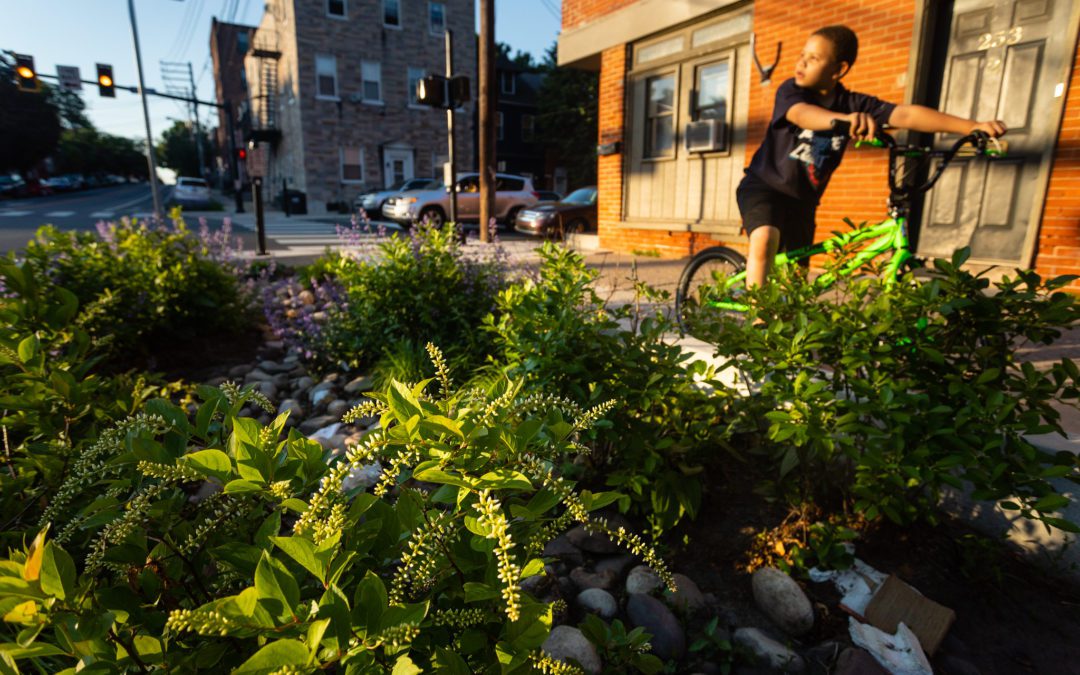Pic Courtesy: Chesapeake Bay Program. CC BY-NC 2.0
Cities in Canada are losing greenspace at an alarming rate, per a recent satellite study conducted by Statistics Canada. The research found that three quarters of Canada’s largest urban centres were detectably less green in 2019 than they were in 1999.
The loss of natural ecosystems to ‘development’ makes our communities more vulnerable to climate change, further threatens biodiversity, and means residents have fewer spaces to connect with and be in nature. Reversing this trend is pivotal to environmental and human health.
That’s why Green Communities Canada is dedicated to transforming urban landscapes across the country by advancing green infrastructure projects in communities.
Green Infrastructure: what is it and why is it desirable?
Before going into what we’re doing to address the problem, let’s look at what green infrastructure is and why it’s so important.
“Green infrastructure” refers to natural and human-made systems that offer a number of benefits to society. It includes:
- Naturally-occurring or managed ecosystems, like wetlands, forests, meadows, gardens, etc.;
- Assets enhanced with trees, plants, rocks and soils, such as rain gardens, green roofs, and bioswales;
- Assets engineered to mimic or complement natural processes—like permeable pavements, rain barrels, or perforated pipes.

Different types of green infrastructure
Benefits of green infrastructure include:
Water and environmental health
Trees, plants, rocks and soils help to absorb and infiltrate water, whereas paved and hardened surfaces generate more runoff. This runoff can pick up pollutants on roadways and other surfaces, and end up in our lakes, rivers and streams, ultimately compromising water quality.
By infiltrating more water, green infrastructure helps improve water quality in our communities and replenishes groundwater, which can help stave off drought. Nature-based green infrastructure also supports urban biodiversity by providing food and habitat to pollinators, birds and wildlife.

Deep rooted native plants can help reduce flood risk. Pic Credit: Toronto and Region Conservation Authority
Stay updated about what's happening at GCC
Subscribe to our monthly newsletter
Climate Resilience
It is estimated that extreme weather events caused by climate change will cost Canadian municipalities over $5 billion annually, and have big health impacts on the 80% of Canadians who live in cities. Green infrastructure can help reduce these costs and keep communities safer by absorbing excess rainfall and reducing flood risk. Green infrastructure also plays a significant role in keeping communities cooler during heat waves as cities with lots of hardened and paved areas can easily be 5-6 degrees warmer than the surrounding countryside! It can also help absorb and sequester GHG emissions.

Pic Credit: City of Melbourne, Australia
Human and public health
Heat waves, the effects of which are much more intense in cities, can cause health problems like respiratory failure and heat stroke. By keeping cities greener and cooler, we can help to mitigate those effects. Further, quality green spaces in cities have been shown to have positive impacts on both physical and mental health — greenspaces are associated with higher levels of physical activity and less obesity, as well as an increased sense of well-being and lower levels of anxiety.
Other social and economic benefits
Green Infrastructure offers a host of other benefits like increased social cohesion, food security, good green jobs, and more.
What is Green Communities Canada Doing to Advance Green Infrastructure?
Green Communities Canada has two dedicated programs to advance green infrastructure in cities across Canada.
- Depave Paradise – For over 10 years, we have centrally coordinated the Depave Paradise program across Canada: an initiative that encourages community participation and collaboration to replace unused and rundown pavement with native plant-filled gardens and green spaces. Since its inception in 2012, this project has successfully transformed over 14,000m2 of pavement into green spaces, and diverted over 5,000m3 of rainwater in 28 cities across the country! Our member organizations have 15 more depave projects planned for summer 2022 — check out our calendar and join a depave or planting event near you!

A before and after representation of a Depave Paradise site
- Living Cities Canada – Living Cities Canada is a program launched in 2021. The goals are to support policy change in cities across the country to advance green infrastructure, and build public support and awareness among residents of those cities.
- National Mini Forest Pilot – This program launched in 2022 provides communities with the skills, knowledge, and tools they need to plant dense native tree communities in small urban plots.
The project envisions Living Cities across Canada: places where green infrastructure is equitable (prioritized in areas of greatest social and environmental need), abundant (implemented widely throughout the landscape and championed by many) and thriving (functioning well over the long-term and providing its full range of benefits). This project is a collaboration between Green Communities Canada, researchers at the University of Toronto, the Green Infrastructure Ontario Coalition, and five local environmental organizations. The project is currently being piloted in five cities from Alberta to New Brunswick, and we plan to bring it to other cities in the future.
With these two programs, Green Communities Canada is both directly transforming the landscape from grey to green, and helping to systematically integrate green infrastructure into how we develop our cities and tend to the land.

Cities need to protect private as well as public urban forests to ensure the many benefits trees provide are not lost to the convenience of clearing a lot “ to prepare it” for infill redevelopment. We need to capture and absorb storm water at source to reduce storm water run off, we need to shade and shelter home to reduce requirements for cooling and heating, along with carbon emissions, we need trees to sequester carbon, filter pollutants and above all reduce the heat island effect, and we need healthy green outdoor spaces to improve our quality of life.